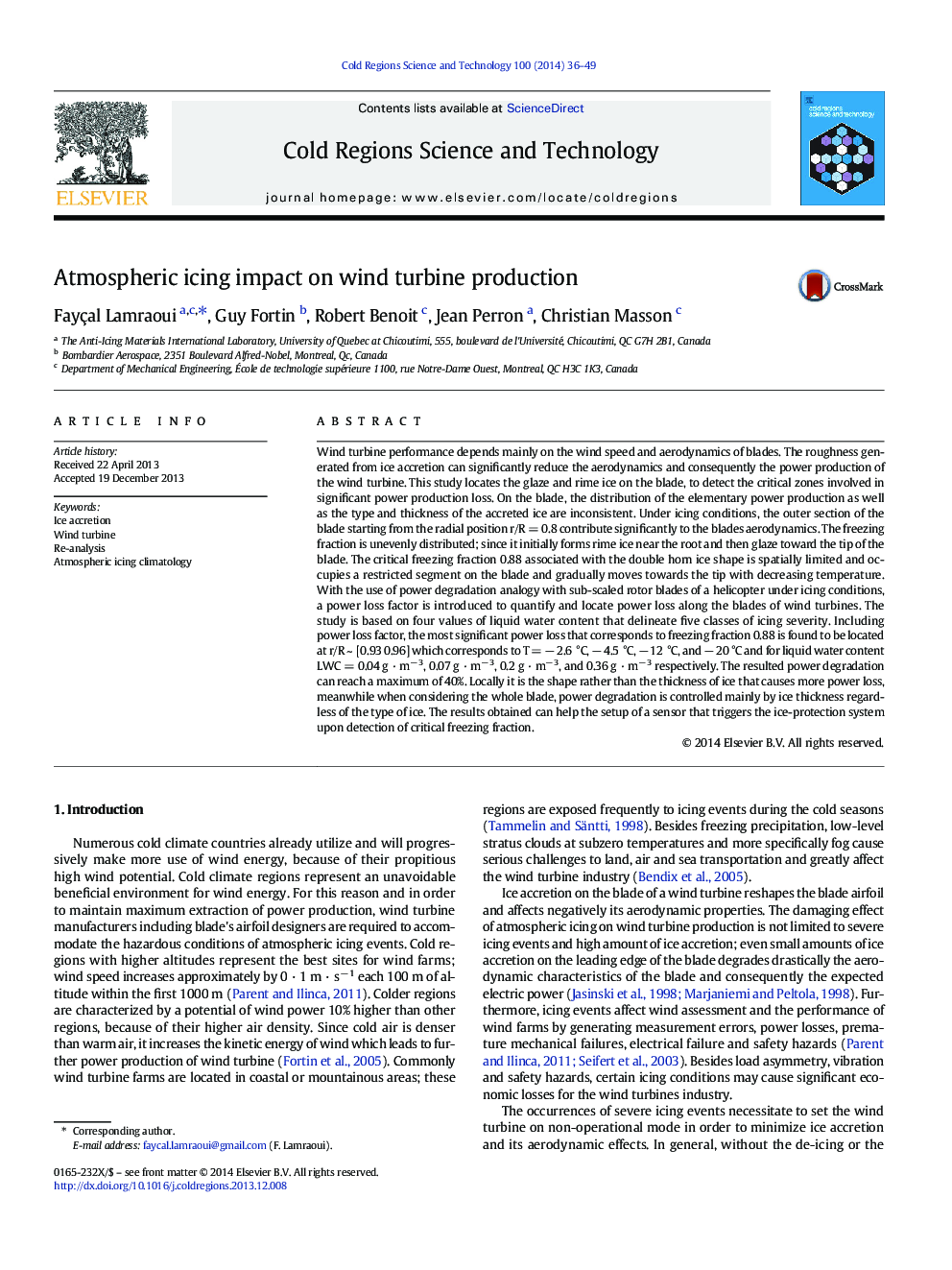| Article ID | Journal | Published Year | Pages | File Type |
|---|---|---|---|---|
| 4675734 | Cold Regions Science and Technology | 2014 | 14 Pages |
•Power distribution along the blade•Ice accretion and types of ice along the blade•Typical icing event durations from atmospheric icing climatology•North American Regional Reanalysis (Pressure level of 1000 mb)•Localized production loss along the blade under icing conditions
Wind turbine performance depends mainly on the wind speed and aerodynamics of blades. The roughness generated from ice accretion can significantly reduce the aerodynamics and consequently the power production of the wind turbine. This study locates the glaze and rime ice on the blade, to detect the critical zones involved in significant power production loss. On the blade, the distribution of the elementary power production as well as the type and thickness of the accreted ice are inconsistent. Under icing conditions, the outer section of the blade starting from the radial position r/R = 0.8 contribute significantly to the blades aerodynamics. The freezing fraction is unevenly distributed; since it initially forms rime ice near the root and then glaze toward the tip of the blade. The critical freezing fraction 0.88 associated with the double horn ice shape is spatially limited and occupies a restricted segment on the blade and gradually moves towards the tip with decreasing temperature. With the use of power degradation analogy with sub-scaled rotor blades of a helicopter under icing conditions, a power loss factor is introduced to quantify and locate power loss along the blades of wind turbines. The study is based on four values of liquid water content that delineate five classes of icing severity. Including power loss factor, the most significant power loss that corresponds to freezing fraction 0.88 is found to be located at r/R ~ [0.93 0.96] which corresponds to T = − 2.6 °C, − 4.5 °C, − 12 °C, and − 20 °C and for liquid water content LWC = 0.04 g · m− 3, 0.07 g · m− 3, 0.2 g · m− 3, and 0.36 g · m− 3 respectively. The resulted power degradation can reach a maximum of 40%. Locally it is the shape rather than the thickness of ice that causes more power loss, meanwhile when considering the whole blade, power degradation is controlled mainly by ice thickness regardless of the type of ice. The results obtained can help the setup of a sensor that triggers the ice-protection system upon detection of critical freezing fraction.
